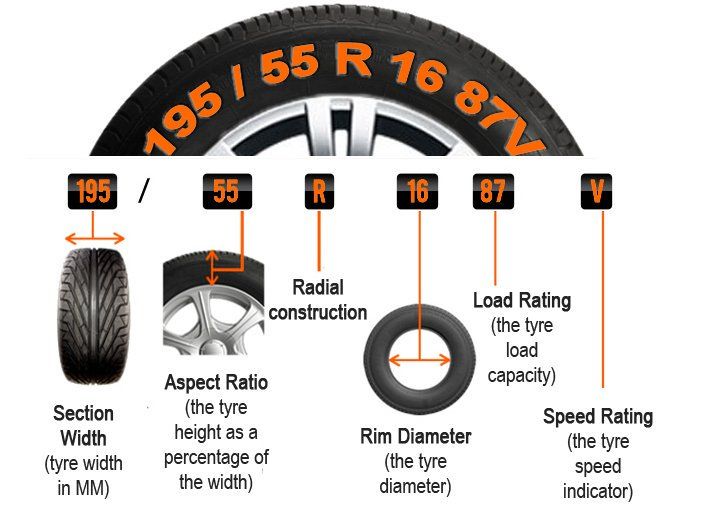If you look closely at any tire, you can find an engraved DOT number. This number gives you valuable insights into the tires keeping you safe. However, it is not always clear to drivers what their DOT number is communicating. The local auto mechanics are here with the full breakdown of how to read a tire’s DOT number.
Every tire identification number begins with the letters DOT (Department of Transportation). It is a marker that verifies you are getting tires that meet the Department of Transportation’s guidelines. It also serves as a clear, universal starting point for a tire’s TIN (tire identification number).
The next group of numbers contains two characters that indicate your tire’s plant code. Every tire manufacturing plant has a unique two-character code, often made with one number and one letter. Why is this important? If there is a tire recall, safety issue, or another tire concern, it can be traced back to the plant that produced the tire(s) in question.
The next two numbers or letters are your tire size code. The tire size code is a little less straightforward than other markings. Originally, the National Highway Traffic Safety Administration (NHTSA) had a universal list of tire sizes and the two-digit codes that represented them. However, the DOT now lets manufacturers determine their own code for tire size, according to the US Federal Register. This change was intended to make it easy for manufacturers to produce new tires without requiring the NHTSA to update its code list. Unfortunately, it makes it challenging to translate the tire size on your tire’s DOT number. Thankfully, there is an easier way to tell your tire size (more on this below).
The third set of values indicates the manufacturer’s characteristics. It is essentially a space for manufacturers to provide tire distinction or other brand-specific insights. The US Federal Register states, “The third grouping may be used at the manufacturer’s option to provide any other significant characteristics of the tire. Except for cases in which a tire is manufactured for a brand name owner, the third grouping is not required.” Manufacturers then submit their list of codes to the National Highway Traffic Safety Administration.
Except for cases in which a tire is manufactured for a brand name owner, the third grouping is not required.” Manufacturers then submit their list of codes to the National Highway Traffic Safety Administration.
Much like the tire size code, this grouping often does not provide valuable information for drivers. It is more so used for recalls, errors, and other official identification needs.
Without ever touching the road, a tire can go bad simply due to its age. After 5 years of age, tires begin experiencing thermo-oxidative degradation. This chemical reaction can severely impact tire safety on the road.
The final four digits on your DOT number will tell you the tire’s age. The first two numbers of this grouping indicate the week of the year your tire was manufactured. The final two digits indicate the year that your tire was manufactured. For example, if your final four DOT numbers are 3020, your tire was manufactured in the 30th week of 2020. You can find more information in our full guide to tire age here.
While DOT numbers are helpful, they might not tell you everything you need to know about your tires. As tire experts, we often have customers ask:
Many drivers expect to find the answers to these and other questions in their DOT number, but this is not the case. Tires brands often include additional insights on the face of the tire. However, it is frequently much easier to view tire information on your tire panel. If you open your driver’s-side door and turn to face the seat, you will find a sticker against your door frame with information about your tires. You can also find additional details in your owner’s manual.
When you are due for new tires, the mechanics at Chapel Hill Tire are here for you. We proudly serve the greater Triangle area with our 9 locations across Raleigh, Apex, Durham, Chapel Hill, and Carrboro. Our mechanics also commonly serve nearby areas, including Knightdale, Cary, Pittsboro, Wake Forest, Hillsborough, Morrisville, and beyond. You can conveniently buy your new tires online using our Tire Finder tool. For all of your tire services, vehicle services, and car care needs, make an appointment today with your nearest Chapel Hill Tire.
We proudly serve the greater Triangle area with our 9 locations across Raleigh, Apex, Durham, Chapel Hill, and Carrboro. Our mechanics also commonly serve nearby areas, including Knightdale, Cary, Pittsboro, Wake Forest, Hillsborough, Morrisville, and beyond. You can conveniently buy your new tires online using our Tire Finder tool. For all of your tire services, vehicle services, and car care needs, make an appointment today with your nearest Chapel Hill Tire.
Back to Resources
Have you ever wondered what the series of numbers and letters on the sidewall of your tire signifies? If you have ever taken a look at your tires you will notice that there is a series of letters and numbers on every tire sold in North America. This is called the DOT number, and if you know the tire DOT meaning, you can determine important information about your tires that will be helpful if you are planning on keeping or replacing them due to age or wear.
One of the most useful aspects about knowing the DOT number on tires is being able to pinpoint the exact date your tires were made. If you are wondering when a tire is too old to be safe, you can take into consideration the age of the tire, which many tire experts consider to be an important aspect in whether you should be thinking about replacing your tires.
The DOT consists of eight to 13 letters and numbers that identify the tire size, the manufacturer’s code, where the tire was manufactured and – most importantly – the week and year the tire was manufactured. If you are concerned about what should be considered to be an old tire, then knowing how to read the DOT and determine the week and year that your tire was manufactured will be important to you, and help you understand when a tire is too old to be safe.
DOT stands for the Department of Transportation National Highway Traffic Safety Administration in the United States. The DOT number on tires certifies the tire manufacturer’s compliance with this organization’s safety standards. The DOT was introduced by the United States in 1971, and this number is used by tire manufacturers worldwide. The longer set of numbers appears on all tires manufactured after that 2000, and is the best way to understand detailed information about your tires, including the date and the location of manufacture. If you are wondering how to interpret the DOT on any tire, then please read on you can learn to read the DOT code on your tires.
The DOT number on tires certifies the tire manufacturer’s compliance with this organization’s safety standards. The DOT was introduced by the United States in 1971, and this number is used by tire manufacturers worldwide. The longer set of numbers appears on all tires manufactured after that 2000, and is the best way to understand detailed information about your tires, including the date and the location of manufacture. If you are wondering how to interpret the DOT on any tire, then please read on you can learn to read the DOT code on your tires.
If you are currently trying to figure out how to read the DOT code on tires, here are three tips:
If you are wondering why do I have to worry about the DOT date, according to the tire experts at websites such as wheels.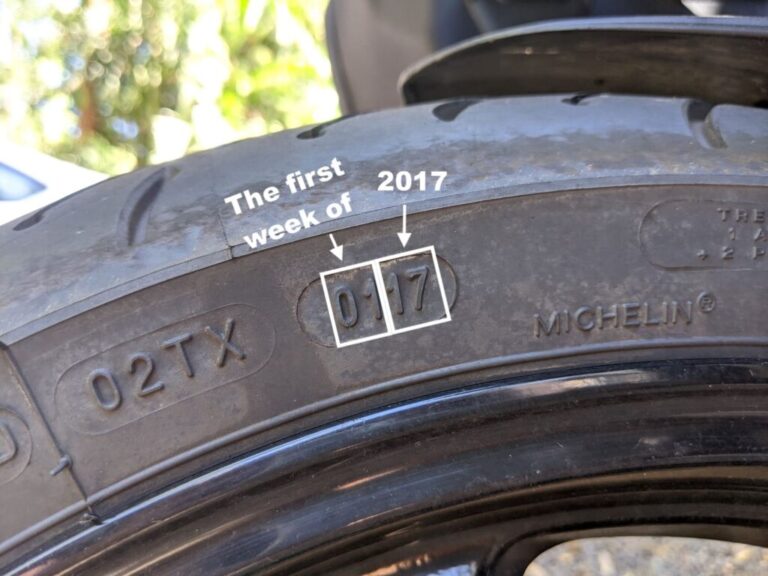 ca, blackcircles Canada and a number of well-known tire manufacturers, tires should be replaced regardless of the appearance of the tread after approximately six years. The Ministry of Transportation in Ontario suggests all tires should be replaced when they are 10 years old — or when the tread is less than 1.5 millimetres deep, or when the tread-wear indicators touch the road. It’s important to remember that tread on tires will wear out more quickly if you regularly tow a trailer, if you carry a lot of weight in your vehicle, or if your vehicle is an electric vehicle (due to the weight of the batteries).
ca, blackcircles Canada and a number of well-known tire manufacturers, tires should be replaced regardless of the appearance of the tread after approximately six years. The Ministry of Transportation in Ontario suggests all tires should be replaced when they are 10 years old — or when the tread is less than 1.5 millimetres deep, or when the tread-wear indicators touch the road. It’s important to remember that tread on tires will wear out more quickly if you regularly tow a trailer, if you carry a lot of weight in your vehicle, or if your vehicle is an electric vehicle (due to the weight of the batteries).
As noted above, various experts have somewhat differing guidelines on how to determine when a tire is too old to be considered safe. Generally, if your tires are six years or older, it is time to seriously consider replacing them for safety reasons. On the positive side, buying new tires can help create greater fuel efficiency for your vehicle, reduce in-cabin noise and vibration, and many of the newer tires are manufactured from more advanced materials that add to their longevity, durability, and are better for the environment.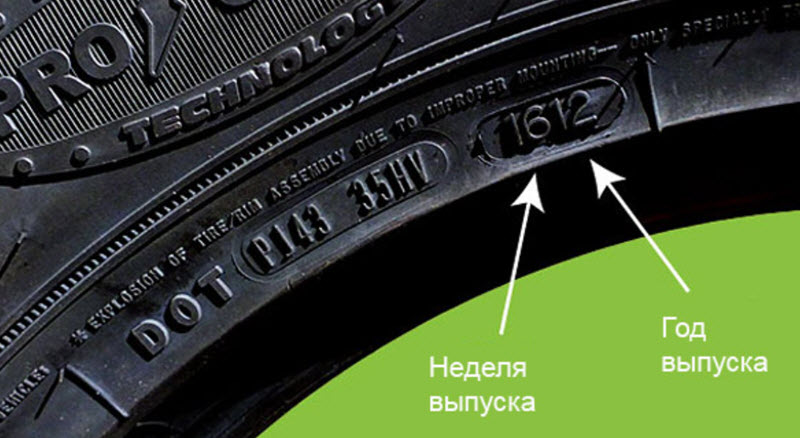
If choosing new tires has you confused, then you just need to reach out to the tire experts at a company like blackcircles Canada. An online tire buying website, the experts at blackcircles can quickly help answer any questions you might have about buying the perfect set of tires for your vehicle, whether you are looking for all-season, winter or all-terrain tires. Blackcircles also features highly competitive pricing on all the brands of tires offered on the website, so no matter what your budget is, we can help. Please reach out to us using email, our online form, instant messenger or simply give us a call.
Yellow and red marks on the tires.
What do they mean:
1. Multi-colored dots, triangles, which are applied to the sidewalls of car tires?
2. Colored stripes on their tread?
Colored stripes on their tread?
The answer to this curious question is quite simple. Circles (dots, triangles) of red, yellow (there are also blue or even white designations) are nothing more than balancing marks and they are intended to ensure the most accurate balancing of an automobile wheel.
1. Yellow dot or yellow triangle.
This yellow dot (or yellow triangle), which is applied to the sidewall of a car tire - is the lightest part of the tire , which is determined by the static balancing method.
If the rim has a distinguishable mark "L" - this is the lightest place on the rim, in this case, when mounting, it is necessary to place the lightest place on the rim ("L") on the opposite side of the light spot on the car tire, i.e. the yellow dot.
Note:
1. "L" is the lightest spot on the rim.
2.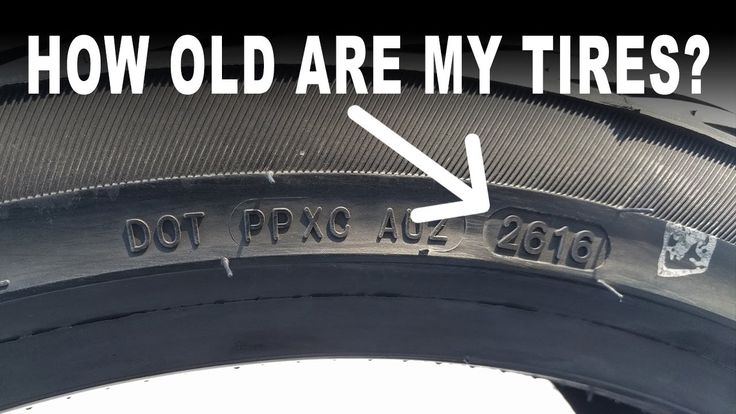 On rims of different manufacturing companies, the "L" point can be indicated by different colored dots: green, blue, as well as other colors.
On rims of different manufacturing companies, the "L" point can be indicated by different colored dots: green, blue, as well as other colors.
If there is no distinguishable “L” marking or colored dots on the rim, then in this case, during installation, it is necessary to combine the heaviest place on the rim, and this will be the place where the inflation valve is located with the lightest place on the car tire, then there is a yellow dot.
2. Red dot or red triangle.
This designation indicates the maximum point of deflection of the radial force (RFV), and thus is the most rigid and therefore heaviest part of the sidewall of an automobile tire. This point, when mounting the wheel, must necessarily be aligned with the “L” mark - this is the lightest place on the rim
. The red dot (triangle) is usually applied to car tires that are supplied in the original (primary) configuration of the car. Its purpose is the greatest power inhomogeneity. In other words, this is a kind of heterogeneity, the occurrence of which can be closely related to various kinds of compounds of various layers of a car tire (belt layers, carcass layer, and so on).
Its purpose is the greatest power inhomogeneity. In other words, this is a kind of heterogeneity, the occurrence of which can be closely related to various kinds of compounds of various layers of a car tire (belt layers, carcass layer, and so on).
The rims that are supplied in the original, original equipment of the car are also marked with the minimum distance from the center of the rim to the rim (a white dot or another mark is applied). During the assembly of the car wheel at the car factory, the red dot of the tire is aligned with this mark on the wheel rim. This is done in order to reduce the maximum power inhomogeneity, to ensure a balanced power characteristic of the wheel assembly.
During normal wheel mounting, experts are advised not to pay attention to the presence of a red dot, but to be guided only by the yellow dot while aligning it with the inflation valve.
3. White dot or white circle.
In the case of some OE car tires, this color coding tells us the point of minimum radial force deflection (RFV), which is the most flexible part of the car tire sidewall wall. In this case, the white dot or circle must be aligned 180° from the 'L' mark, or the 'top' mark on the wheel.
In this case, the white dot or circle must be aligned 180° from the 'L' mark, or the 'top' mark on the wheel.
4. Colorful lines.
Multi-colored lines that are printed on car tire treads are necessary to distinguish these tires that are in a pile, for example, in a store or in a warehouse.
Each tire size has its own unique color, arrangement and thickness of these colored stripes. The stripes can sometimes vary depending on the state of the manufacturing company, the specification and release date of car tires, and even on tires that have the same tread pattern and size.
According to foreign experts: colored lines serve as an indicator on the tire, which shows that this tire has been run in.
5. White stamp with a number on a car tire.
A white stamp with a number on a car tire indicates the number of the inspector who carried out the final inspection of the car tire at the factory. In addition, this digital marking does not carry any information load.
In addition, this digital marking does not carry any information load.
Car owners who purchase car tires in retail stores are advised to first of all pay attention to the corresponding inscriptions that are present on the sidewall of the wheel tire: size, speed symbol, load index, country of the manufacturer, tread pattern, specification, etc. Further. Colored stripes on car tire treads carry only internal factory values and should not be taken into account by ordinary buyers in any way.
Do you want to choose a tire for your car, but do not understand tire markings well? It's not a problem! In this section, we will help you figure out what tire parameters are, what they mean, and which tire is right for your car.
Select tires / tire catalog
195/65 R15 91 T XL
195 is the tire width in mm.
65 - Proportionality, i.e. profile height to width ratio. In our case, it is equal to 65%. Simply put, with the same width, the larger this indicator, the higher the tire will be and vice versa. Usually this value is simply called “profile”.
Since the tire profile is a relative value, it is important to take into account when choosing rubber that if you want to put tires with a size of 205/65 R15 instead of the size 195/65 R15, then not only the width of the tire will increase, but also the height! Which in most cases is unacceptable! (except when both of these sizes are indicated in the car's operating book). You can calculate the exact data on changing the outer dimensions of the wheel in a special tire calculator.
If this ratio is not specified (for example, 185/R14C), then it is equal to 80-82% and the tire is called full profile. Reinforced tires with this marking are usually used on minibuses and light trucks, where a large maximum wheel load is very important.
R - means a tire with a radial cord (in fact, almost all tires are made this way now).
Many mistakenly believe that R- means the radius of the tire, but this is the radial design of the tire. There is also a diagonal design (indicated by the letter D), but recently it has practically not been produced, since its performance is noticeably worse.
15 - wheel (rim) diameter in inches. (It is the diameter, not the radius! This is also a common mistake). This is the “landing” diameter of the tire on the disk, i.e. is the inside size of the tire or the outside of the rim.
91 - load index. This is the level of maximum permissible load on one wheel. For passenger cars, it is usually done with a margin and is not a decisive factor when choosing tires (in our case, IN - 91 - 670 kg.). For minibuses and small trucks, this parameter is very important and must be observed.
T is the tire speed index. The larger it is, the faster you can ride on this tire (in our case, IS - H - up to 210 km / h). Speaking about the tire speed index, I would like to note that with this parameter, the tire manufacturer guarantees the normal operation of the rubber when the car is constantly moving at the specified speed for several hours.
The larger it is, the faster you can ride on this tire (in our case, IS - H - up to 210 km / h). Speaking about the tire speed index, I would like to note that with this parameter, the tire manufacturer guarantees the normal operation of the rubber when the car is constantly moving at the specified speed for several hours.
There are two different American tire markings. The first one is very similar to the European one, only the letters “P” (Passanger - for a passenger car) or “LT” (Light Truck - light truck) are placed before the size. For example: P 195/60 R 14 or LT 235/75 R15. And another tire marking, which is fundamentally different from the European one.
Example: 31x10.5 R15 (corresponds to European size 265/75 R15)
31 is the outside diameter of the tire in inches.
10.5 is tire width in inches.
R - a tire with a radial design (older tire models were with a diagonal design).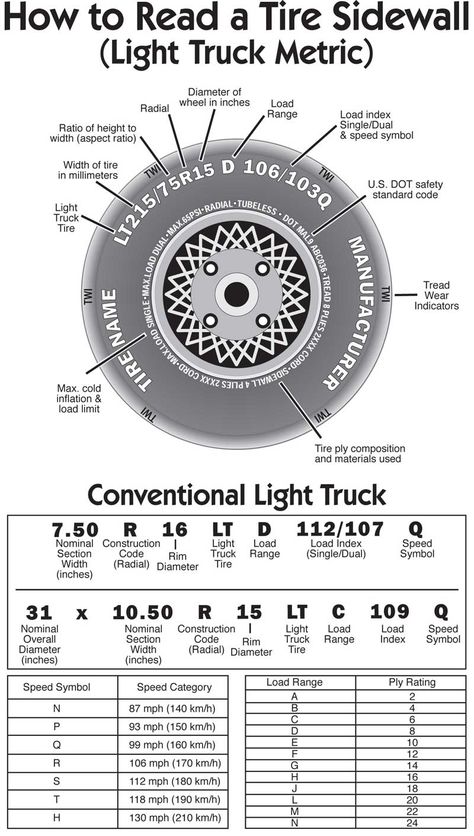
15 is the inner diameter of the tire in inches.
Generally speaking, except for inches that are unusual for us, the American tire marking is logical and more understandable, unlike the European one, where the height of the tire profile is not constant and depends on the width of the tire. And here everything is simple with decoding: the first digit of the standard size is the outer diameter, the second is the width, the third is the inner diameter.
XL or Extra Load is a reinforced tire, the load index of which is 3 units higher than that of conventional tires of the same size. In other words, if a given tire has a load index of 91 marked XL or Extra Load, then this means that with this index, the tire is able to withstand a maximum load of 670 kg instead of 615 kg (see the table of tire load indices).
M+S or tire marking M&S (Mud + Snow) - mud plus snow and means that the tires are all-season or winter. Many summer tires for SUVs are labeled M&S. However, these tires must not be used in winter, as winter tires have a completely different rubber compound and tread pattern, and the M&S badge indicates good flotation performance.
Many summer tires for SUVs are labeled M&S. However, these tires must not be used in winter, as winter tires have a completely different rubber compound and tread pattern, and the M&S badge indicates good flotation performance.
All Season or AS all season tires. Aw (Any Weather) - Any weather.
Pictogram * (snowflake) — rubber is designed for use in harsh winter conditions. If this marking is not on the sidewall of the tire, then this tire is intended for use only in summer conditions.
Aquatred, Aquacontact, Rain, Water, Aqua or icon (umbrella) Special rain tires.
Outside and Inside ; asymmetric tires, i.e. It is important not to confuse which side is the outside and which is the inside. When installing, the Outside inscription must be on the outside of the car, and Inside on the inside.
RSC (RunFlat System Component) - RunFlat tires are tires that allow you to continue driving at a maximum speed of 80 km/h with a FULL tire pressure drop (puncture or cut).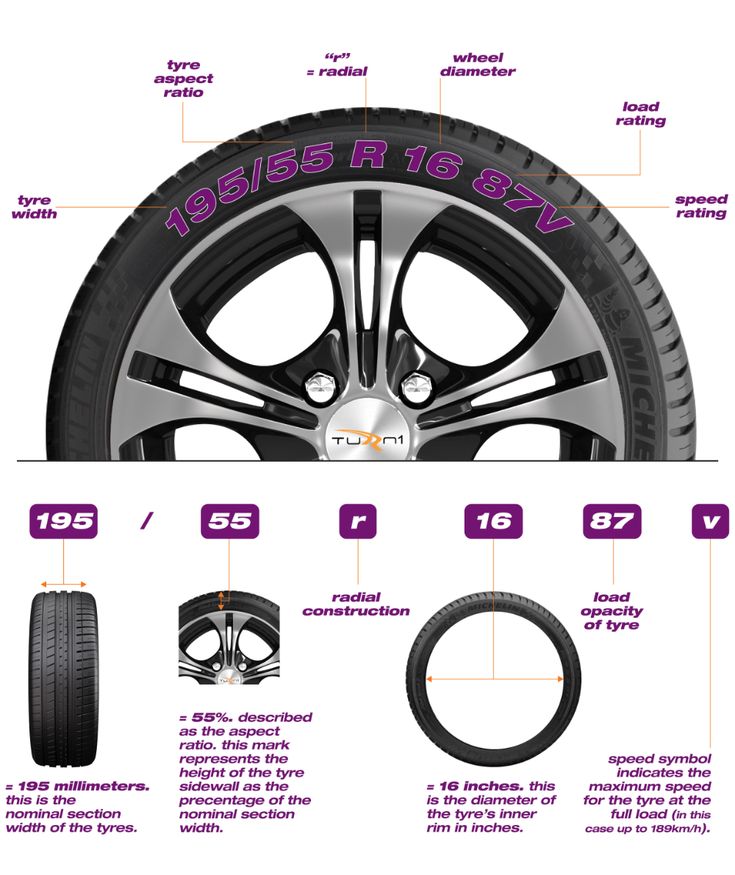 On these tires, depending on the manufacturer's recommendations, you can drive from 50 to 150 km. Different tire manufacturers use different designations for RSC technology. For example: Bridgestone RFT, Continental SSR, Goodyear RunOnFlat, Nokian Run Flat, Michelin ZP etc.
On these tires, depending on the manufacturer's recommendations, you can drive from 50 to 150 km. Different tire manufacturers use different designations for RSC technology. For example: Bridgestone RFT, Continental SSR, Goodyear RunOnFlat, Nokian Run Flat, Michelin ZP etc.
Rotation or arrow This marking on the tire sidewall indicates a directional tire. When installing the tire, you must strictly observe the direction of rotation of the wheel, indicated by the arrow.
Tubeless - tubeless tyre. In the absence of this inscription, the tire can only be used with a camera. Tube Type - indicates that this tire must be used only with a tube.
Max Pressure ; maximum allowable tire pressure. Max Load - the maximum allowable load on each wheel of the car, in kg.
Reinforced or the letters RF in the size (for example 195/70 R15RF) means that this is a reinforced tire (6 layers). The letter C at the end of the size (for example 195/70 R15C) indicates a truck tire (8 layers).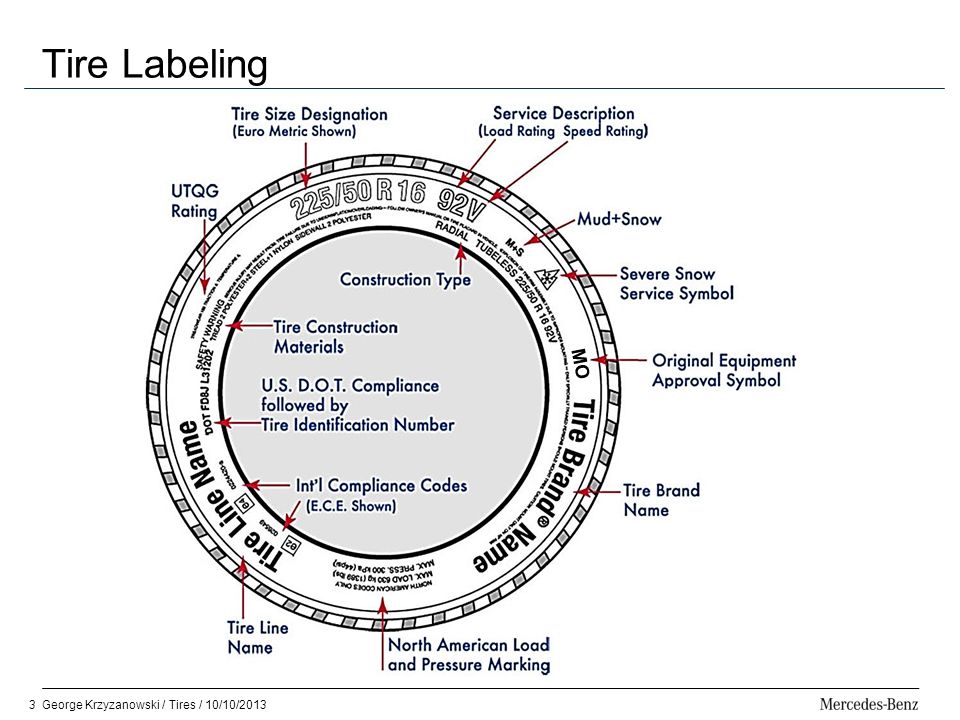
Radial this marking on the rubber in the standard size means that this tire is a radial design. Steel means that there is a metal cord in the tire structure.
Letter E (in a circle) - the tire meets the European requirements of ECE (Economic Commission for Europe). DOT (Department of Transportation - US Department of Transportation) is an American quality standard.
Temperature A, B, or C The temperature resistance of the tire at high speeds on the test bench (A is best).
Traction A, B, or C Tire wet braking capability.
Treadwear ; relative expected mileage compared to a specific US standard test.
TWI (Tread Wear Indiration) - tire tread wear indicators. The marking on the TWI wheel can also be with an arrow. Pointers are located evenly in eight or six places around the entire circumference of the tire and show the minimum allowable tread depth.